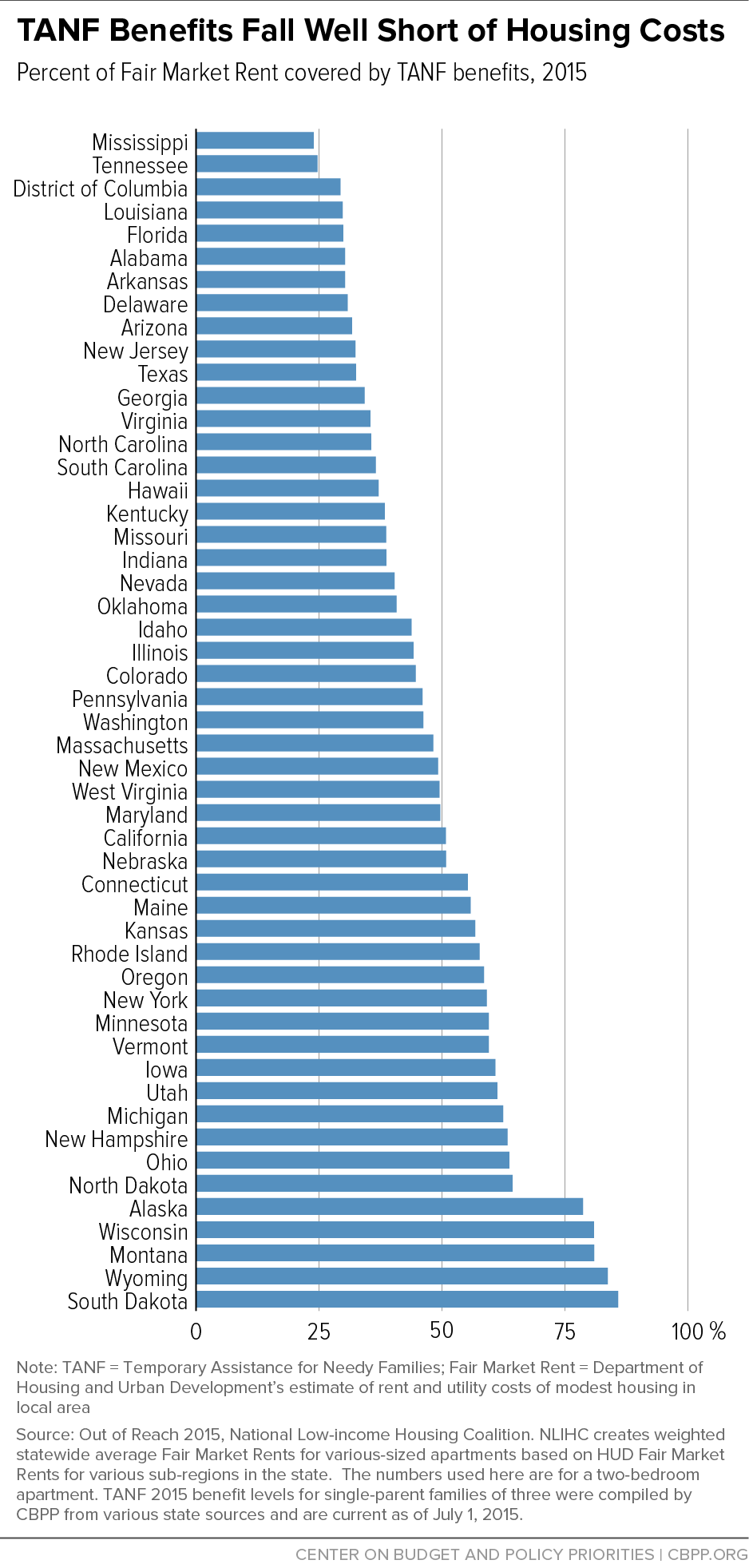BEYOND THE NUMBERS
Matthew Desmond’s new book, Evicted: Poverty and Profit in the American City, shows how unaffordable housing costs push many poor families further into destitution. Temporary Assistance for Needy Families (TANF), the country’s main cash assistance program for poor families, offers inadequate help, as our 2015 report details.
In every state, the monthly TANF benefit for a family of three is less than the Fair Market Rent — the Department of Housing and Urban Development’s estimate of rent and utility costs of modest housing in a local area — of a two-bedroom apartment. In 29 states plus the District of Columbia, the TANF benefit is less than half of the Fair Market Rent (see figure).
For example, in Wisconsin, where Desmond conducted his research, TANF covers about 81 percent of the Fair Market Rent. In a higher-cost, lower-benefit state like New Jersey, TANF covers only about 32 percent of housing costs.
TANF recipients have a limited time to receive benefits and must participate in work or work-preparation activities. During this time-limited, work-focused window, TANF benefits need to do a better job of enabling parents to meet basic needs like housing so they can focus on finding work or increasing their skills in order to leave welfare.
TANF can’t do it alone, partly because it reaches only a small share of poor families with children; as Desmond suggests, we should expand the Housing Choice Voucher program to protect more families (both TANF and non-TANF recipients) from what he calls “today’s eviction epidemic.” Otherwise, deeply poor families risk more instability.

